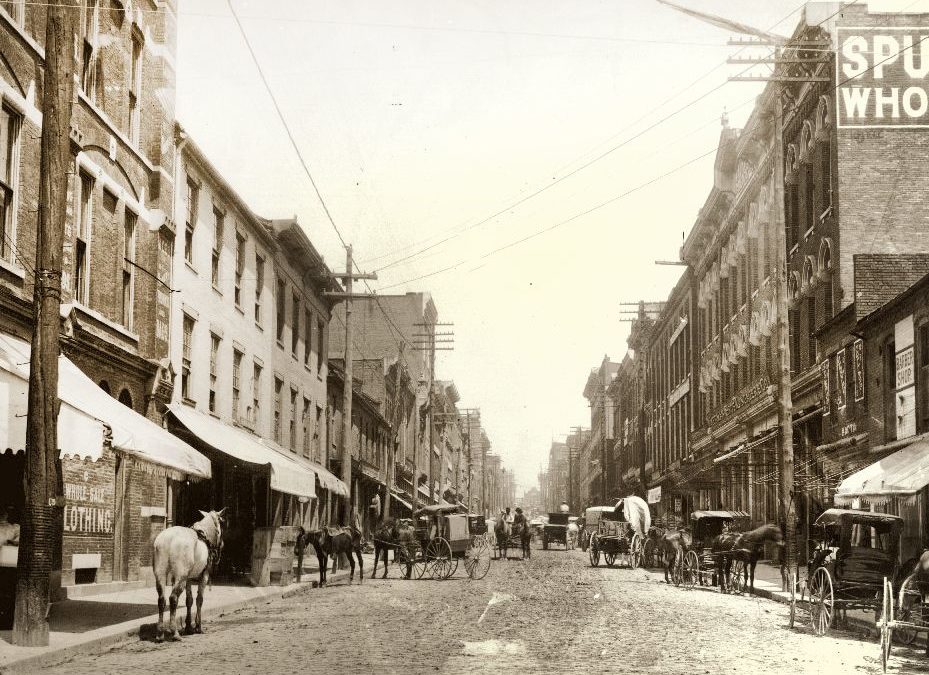(Above: 1897 Market Street, now 2nd Ave, looking north from Broadway)
The Christmas morning bombing was a tragedy for Nashville’s historic Second Avenue, destroying businesses and displacing residents. As the repairs begin, how should the district be rebuilt?
According to the Office of Emergency Management, the Christmas Day blast affected 400 residents, 1,200 employees, 45-plus businesses, and 46 parcels (some containing multiple structures). Metro Nashville Codes Department has deemed 10 buildings unsafe.
The buildings lining the east side of Second Avenue are long and narrow, stretching between Second and First Avenue, and date back to the late 1800s.
Back then, Second Avenue was known as Market Street and First Avenue was Front Street. The neighborhood was bustling with steam traffic on the Cumberland River transporting people and freight. Steamboats — some owned by Capt. Tom Ryman for whom the Ryman Auditorium is named — docked at riverfront, supplies were unloaded and moved a few yards into the warehouse entrances on Front Street and the goods were sold from storefronts on Market Street.
A century later, Front Street was better known as First Avenue and lined by back doors rarely opened and guarded by trash dumpsters. We had turned our back on the river. In the 1980s, occasional barge launches on the East Bank and programmed activity at Riverfront Park helped draw people to the river and inject some energy into the district.
Those were the days before the Plan of Nashville when the city had 84 vacant and semi-vacant old buildings and downtown was an empty shell. As one of the most historic sections of town, Second Avenue had some life even then. Market Street Emporium, Windows on the Cumberland, Laurell’s Oyster Bar and a handful of small businesses and law offices dotted the street before other businesses moved into the neighborhood.
In the early 2000s, the area started to really take off. The Nashville Downtown Partnership was created. Our CityLiving Group started home tours to show off the potential of living downtown. Core Development developed a number of properties including Church Street and Exchange Lofts, both damaged peripherally by the bomb. We also opened a downtown CityLiving Group sales office on Church Street near Third Avenue, which remained open before the Great Recession required consolidation.
Second Avenue continued to thrive. Steve Turner revitalized a five-story building on Second Avenue and named it Butler’s Run. The Wildhorse Saloon opened. Residents were attracted to the street by the renovated lofts and conversion to condos of apartments like District Lofts, marketed and sold by CityLiving Group.
Like many Nashvillians, I am interested in the reconstruction of Second Avenue. I want it to be a walkable neighborhood that is safe and healthy for locals and tourists. A neighborhood that respects its past and embraces its future. I know many of my urban planning friends, Nashville Civic Design Center and ULI Nashville will be adding their expertise to the effort.
My hope is we will finally stop car traffic on Second Avenue and convert it and Lower Broad into a walking district. Is this rebuilding also our opportunity to revisit our relationship with the river? Shouldn’t we turn our face to the river, versus turning inward? Or should we reconstruct the buildings to do both?

